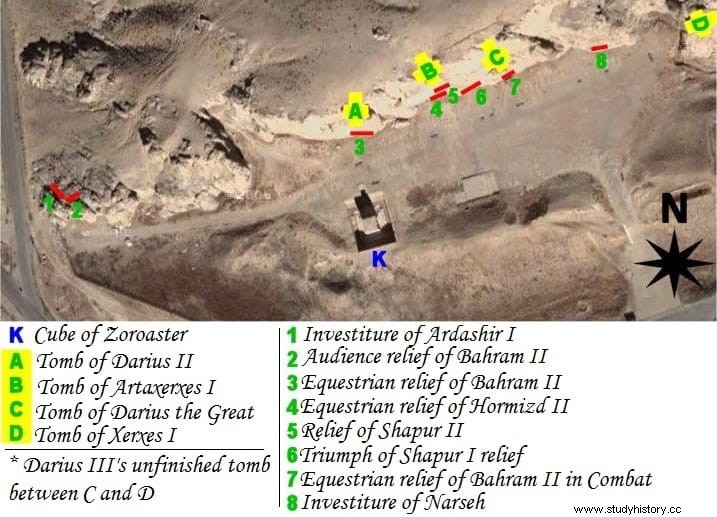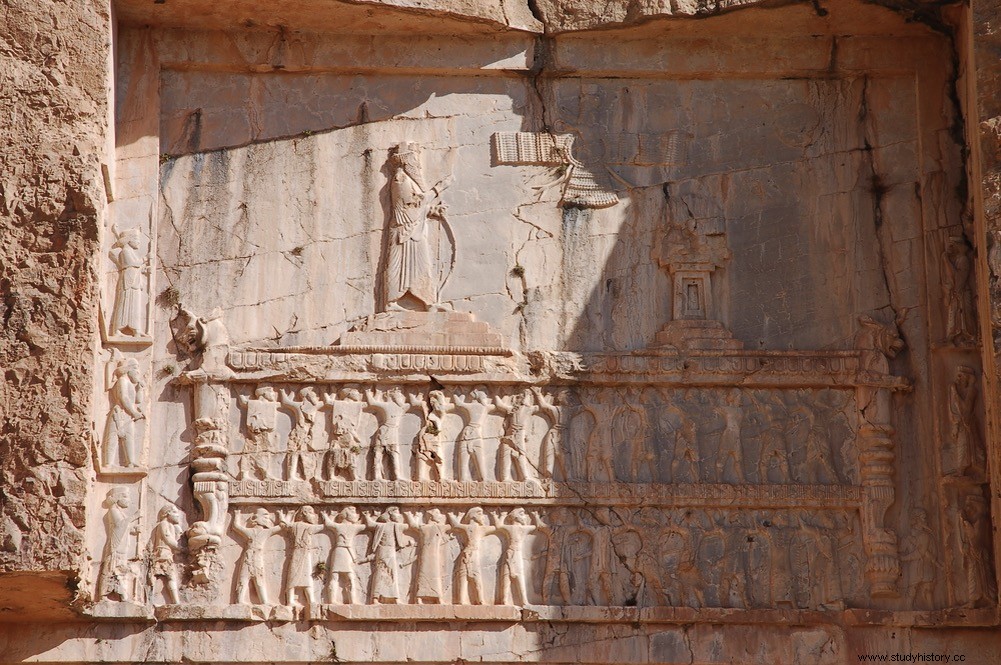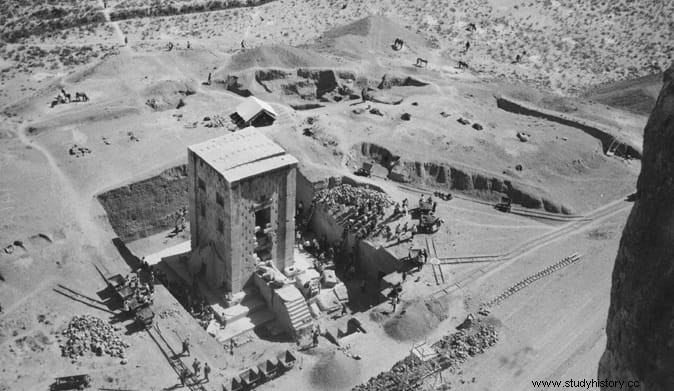In the Iranian province of Fars, about five kilometers northwest of Persepolis, the ancient capital of the Persian empire, there is a rocky mountain in which tombs and reliefs from the Achaemenid and Sassanian eras are excavated.
Of all of them, four stand out for their size, cruciform in appearance and with large carved reliefs on their upper and lower parts, excavated following the model of the Egyptian hypogea.

The oldest has inscriptions, from which it is deduced that it is the tomb of Darius I, the third king of the Achaemenid dynasty, who ruled the empire between 521 and 486 BC. and was defeated by the Athenians and their allies at the Battle of Marathon in 490 BC. One of the fragments of the inscription reads:
The other three major tombs are similar in shape and appearance to that of Darius I, but since none of them have inscriptions, archaeologists can only speculate on who their last inhabitants would have been. The most accepted hypothesis is that they are the tombs of Xerxes I (the son of Darius), Artaxerxes I and Darius II.

The entrance to each of the tombs is located at a great height right in the center of the cross. Inside, a chamber houses the sarcophagus with the remains of the monarch.
There is a fifth tomb of the same type that is unfinished, and that could correspond to Artaxerxes III or Darius III, the last of the Achaemenids, defeated by Alexander the Great at the battle of Gaugamela in 331 BC. and assassinated days later by his own satraps.
The reliefs that adorn the exterior of the tombs were made at a later time by the Sassanids during the second Persian empire (226-651 AD), and represent outstanding war scenes of different sovereigns such as Narses, Shapur I, Hormuz II, Bahram II and Ardashir. I.

The facade of the tombs also presents architectural decoration of columns that form a kind of portico similar to those of Persepolis itself. Archaeologists believe that the entrances must have been closed after each burial, these being destroyed and the interior looted in times after Alexander.
About 45 meters from the tombs, just in front of the supposed one of Dario II, is the Cube of Zoroaster (Ka’ba-i Zartosht ), a small construction from the 5th century B.C. in the form of a tower 14 meters high that could have had a ritual function, keeping alive the flame of eternal fire. Some Iranian experts believe that it served as a storehouse for religious books and royal documents.
On three of its outer sides there are trilingual inscriptions in Sassanian Persian, Parthian and Greek, which constitute the most important historical document of the Sassanid era.

Numerous European travelers have visited the site and made drawings of the tombs and the tower since the 18th century. The first of these was Carsten Niebuhr in 1765. But the first systematic excavations and investigations of the entire complex were by German archaeologist Ernst Herzfeld in 1923. Herzfeld spent 11 years in Iran also excavating the ancient capitals of Pasargadae and Persepolis. In 1934, while in London, he was dismissed from his teaching position in Berlin for having Jewish ancestry, and was never able to return.
Later, the Oriental Institute of the University of Chicago, under the direction of the archaeologist Erich Schmidt, would be in charge of continuing his work in Naqsh-e Rostam between 1936 and 1939, publishing the first study of the structures.
